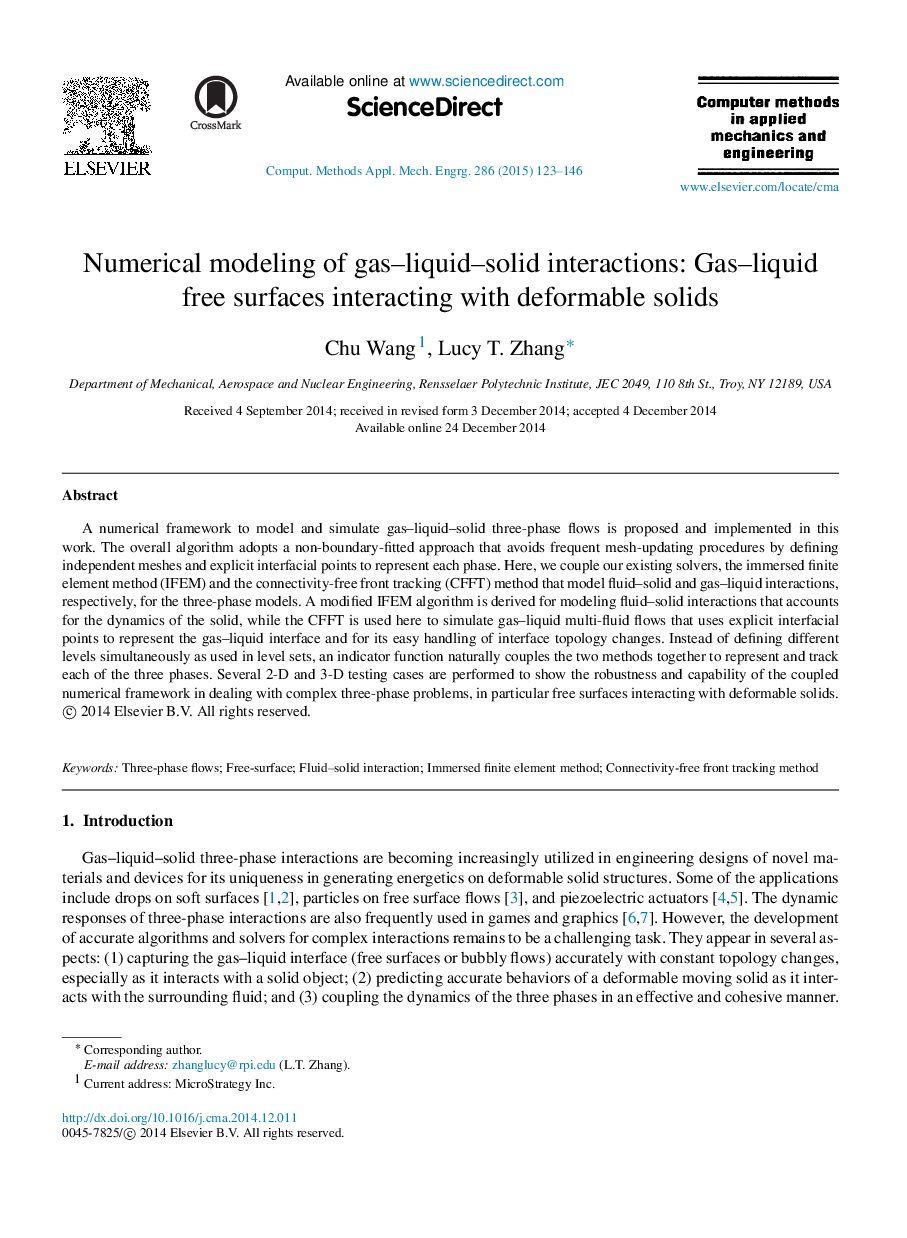| Article ID | Journal | Published Year | Pages | File Type |
|---|---|---|---|---|
| 497706 | Computer Methods in Applied Mechanics and Engineering | 2015 | 24 Pages |
A numerical framework to model and simulate gas–liquid–solid three-phase flows is proposed and implemented in this work. The overall algorithm adopts a non-boundary-fitted approach that avoids frequent mesh-updating procedures by defining independent meshes and explicit interfacial points to represent each phase. Here, we couple our existing solvers, the immersed finite element method (IFEM) and the connectivity-free front tracking (CFFT) method that model fluid–solid and gas–liquid interactions, respectively, for the three-phase models. A modified IFEM algorithm is derived for modeling fluid–solid interactions that accounts for the dynamics of the solid, while the CFFT is used here to simulate gas–liquid multi-fluid flows that uses explicit interfacial points to represent the gas–liquid interface and for its easy handling of interface topology changes. Instead of defining different levels simultaneously as used in level sets, an indicator function naturally couples the two methods together to represent and track each of the three phases. Several 2-D and 3-D testing cases are performed to show the robustness and capability of the coupled numerical framework in dealing with complex three-phase problems, in particular free surfaces interacting with deformable solids.
